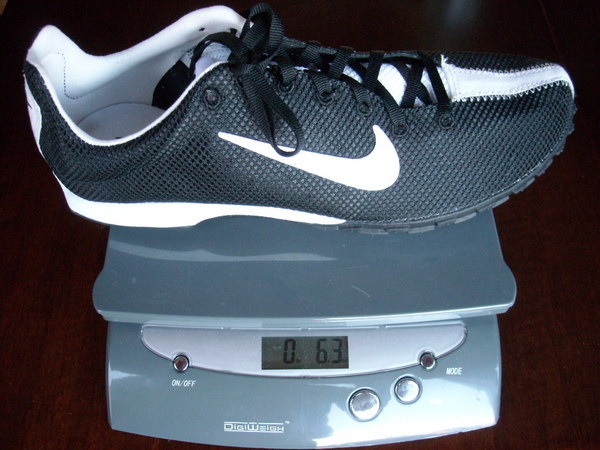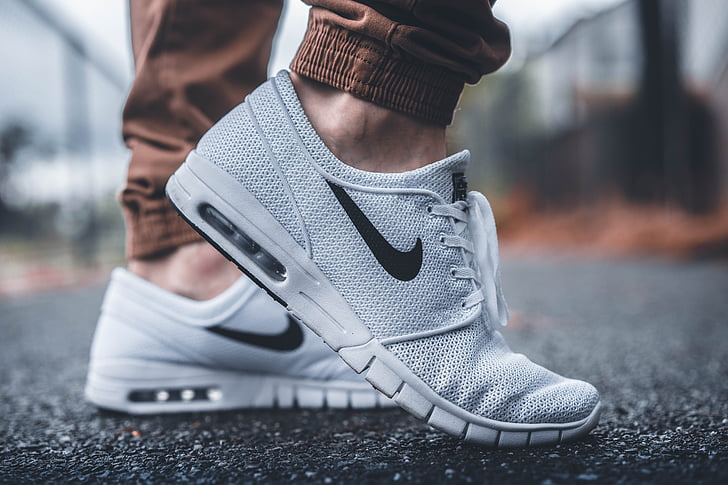Michael Weinstein is a seasoned writer and a dedicated expert in work safety, footwear, and popular shoe brands. With years of research and expertise, he's...Read more
Michael Weinstein is a seasoned writer and a dedicated expert in work safety, footwear, and popular shoe brands. With years of research and expertise, he's...Read more
Ever wondered about the cost of manufacturing Nike shoes? While the exact figures for Nike shoes are not publicly disclosed, it is estimated that manufacturing costs make up a small percentage of the final retail price. Factors like materials, labor, and overhead expenses all contribute to the overall cost. Companies like Nike invest in research, development, and technology to ensure their products meet quality standards. Ultimately, the price you pay for Nike shoes includes various factors beyond just manufacturing costs.
How Much Do Nike Shoes Cost To Make?
Have you ever wondered how much it actually costs to make those cool Nike shoes you love? Well, you’re in luck! In this article, we’re going to explore the fascinating world of sneaker production and uncover the secrets behind the costs involved.
From the materials used to the labor required, we’ll break down the expenses so you can get a better understanding of what goes into making a pair of Nike shoes. So, grab your favorite sneakers and let’s dive in!

How Much Do Nike Shoes Cost to Make?
Have you ever wondered how much it costs to produce a pair of Nike shoes? Well, you’re in luck. In this article, we will explore the intricacies of Nike’s manufacturing process and break down the costs associated with creating their iconic footwear. From materials and labor to marketing and design, we will delve into the factors that contribute to the total cost of production. So, let’s lace up our sneakers and dive into the world of Nike shoe production!
The Cost Breakdown of Nike Shoes
Now that we have a general understanding of the complexities of Nike’s manufacturing process, let’s take a closer look at the various components that factor into the cost of producing their shoes. From raw materials and labor to marketing and design expenses, there are multiple factors to consider when calculating the total cost breakdown of Nike shoes.
The Materials
One of the most significant costs in producing Nike shoes is the materials used. Nike utilizes a wide range of materials, including rubber, leather, fabric, and synthetic materials, for their footwear. These materials are sourced from various suppliers around the world, and the cost can vary depending on factors such as quality, availability, and sustainability. Additionally, Nike invests heavily in research and development to create innovative materials, which can add to the overall cost of production.
The cost of materials can vary significantly depending on the type of shoe being produced. For example, the materials used in a pair of running shoes may differ from those used in basketball shoes. Nike also factors in the cost of shipping raw materials to their manufacturing facilities, as well as any import/export duties or tariffs imposed by different countries.
To streamline their supply chain and reduce costs, Nike has implemented strategies such as lean manufacturing and Just-in-Time delivery. These practices help minimize waste and optimize efficiency throughout the production process.
The Labor
Another significant cost in producing Nike shoes is labor. Nike outsources the manufacturing of their shoes to various factories around the world, primarily in countries like China, Vietnam, and Indonesia. Labor costs can vary depending on the country, with factors such as minimum wage laws, worker rights, and labor market conditions coming into play.
While outsourcing manufacturing allows Nike to benefit from lower labor costs, it also presents challenges in terms of worker conditions and fair wages. In recent years, Nike has faced criticism and scrutiny regarding these issues, prompting the company to implement measures to improve labor conditions and ensure workers’ rights are protected.
As part of their commitment to responsible manufacturing, Nike has established partnerships and initiatives to promote ethical labor practices and sustainability throughout their supply chain. They require their suppliers to adhere to strict standards outlined in their Code of Conduct and carry out regular audits to monitor compliance.
Design and Development
The design and development phase is an essential component of the cost breakdown of Nike shoes. Nike invests heavily in research, design, and innovation to create cutting-edge footwear. They employ a team of talented designers, engineers, and developers who work together to bring new shoe designs to life.
These professionals use advanced computer-aided design (CAD) software, 3D modeling, and prototyping techniques to develop and refine initial design concepts. The cost associated with these design tools, as well as the salaries and benefits of the design team, contributes to the overall cost of production.
Design and development expenses also include market research, trend analysis, and consumer insights to ensure that Nike’s products align with customer expectations. Nike invests heavily in understanding consumer preferences and staying ahead of the latest trends in the athletic footwear industry.
The Marketing and Branding
Marketing and branding play a crucial role in the overall cost of producing Nike shoes. As a global brand, Nike spends significant resources on advertising, promotion, and brand building. They engage in high-profile endorsement deals with athletes, invest in global marketing campaigns, and sponsor major sporting events.
The cost of marketing and branding is spread over the production costs of all Nike shoes, as these activities help establish and maintain the brand’s reputation and desirability. Nike’s marketing efforts contribute to driving consumer demand and justifying the premium prices they command.
Nike also invests in research and development to create innovative marketing strategies and technologies. They leverage digital platforms, social media, and data analytics to understand consumer behavior and tailor their marketing messages to specific target audiences.
The Financial Impact of Nike Shoe Costs
Understanding the cost breakdown of Nike shoes gives us insights into the financial impact on the company’s bottom line. While the exact numbers are proprietary information, it is clear that the cost of production plays a significant role in determining the retail prices of Nike shoes.
Nike strategically positions itself as a premium brand, targeting consumers willing to pay a premium for quality, innovation, and the iconic Nike logo. By investing in high-quality materials, cutting-edge designs, and impactful marketing, Nike can command higher prices for their footwear compared to competitors.
However, balancing production costs and retail prices is a delicate act. Nike must carefully consider factors such as market demand, consumer demographics, and competitor pricing when setting the price for each shoe model. They aim to optimize profitability without compromising their brand image or alienating their target market.
The Benefits of Understanding Nike Shoe Costs
Understanding the cost breakdown of Nike shoes provides valuable insights into the intricacies of the global footwear industry. It allows consumers to make informed decisions when purchasing Nike products and supports their understanding of the value they are receiving for their investment.
Additionally, understanding the production costs of Nike shoes sheds light on the ethical and environmental considerations involved in the manufacturing process. It encourages consumers to consider factors beyond price and style when choosing a footwear brand, such as labor practices, sustainability, and responsible manufacturing.
Furthermore, by understanding the financial impact of production costs on Nike’s bottom line, investors and stakeholders can gain a deeper understanding of the company’s profitability and make informed decisions about their investments.
Conclusion
The cost breakdown of Nike shoes encompasses various factors, including materials, labor, design, and marketing. Understanding these components provides valuable insights into the financial implications for Nike and the value customers receive when purchasing their products. By considering the manufacturing process and associated costs, consumers can make informed decisions about their purchases and support brands that align with their values. Moreover, understanding Nike’s production costs promotes accountability and transparency within the global footwear industry. So, the next time you lace up a pair of Nike shoes, you’ll have a better understanding of the journey they undertook from concept to your feet.

Summary
Nike shoes are sold at high prices, but the cost to make them is relatively low. The majority of the cost goes towards marketing and branding. The factories that produce Nike shoes are located in countries with low labor costs. Although the materials used to make the shoes are not expensive, Nike still makes quality products. So, if you ever wondered how much it costs to make a pair of Nike shoes, now you know!
In conclusion, Nike shoes are not expensive to make, but their branding and marketing contribute to the higher price tag. The materials used are not costly, and the factories are located in countries with low labor costs. Despite the low manufacturing cost, Nike still ensures that their products are of good quality. So next time you see a pair of Nike shoes and wonder about their cost, remember that the value comes from the branding and the quality of the product itself.
Recent Posts
Puma sneakers have different sizing depending on the specific style and model. It's recommended to check the product description or reviews for each sneaker to determine if they run small or large....
How To Lace Puma Shoes? If you're a fan of Puma shoes and want to learn how to lace them, you've come to the right place! Lacing your Puma shoes properly not only adds a stylish touch but also...
